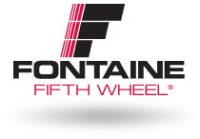In the face of escalating environmental concerns, the transportation industry, especially long-haul trucking, contributes to carbon emissions. As we witness the impacts of climate change, it becomes imperative to develop sustainable practices within the trucking sector. This blog post explores 12 key points toward a trucking plan that can help save the planet.
6 Things Trucking Needs From Outside the Industry
-
Transition to Electric Trucks:
Embracing electric trucks is a pivotal step towards reducing the trucking industry’s carbon footprint. Governments and companies should invest in developing and adopting electric trucks to decrease dependence on fossil fuels.
-
Investment in Charging Infrastructure:
The success of electric trucks hinges on a robust charging infrastructure. Governments and industry stakeholders should collaborate to build an extensive charging station network along major trucking routes.
-
Promotion of Hybrid Technologies:
Hybrid technologies that combine traditional fuels with electric power can serve as a transitional phase. Encouraging hybrid trucks can help mitigate environmental impact while the industry shifts towards fully electric solutions.
-
Implementation of Smart Fleet Management:
Innovative fleet management technologies can optimize routes, reduce idle time, and enhance fuel efficiency. These systems can contribute significantly to reducing overall emissions.
-
Promoting Sustainable Fuels:
Exploring and adopting alternative fuels such as biofuels and hydrogen can make the trucking industry more sustainable. Research and development in this area should be actively encouraged.
-
Incentives for Eco-Friendly Fleets:
Governments and industry regulators can provide incentives for companies that invest in eco-friendly fleets. Tax breaks, subsidies, and other financial incentives can encourage adopting sustainable practices.
6 Things the Trucking Industry Must Do
-
Adoption of Aerodynamic Designs:
Reducing aerodynamic drag through innovative truck designs can significantly improve fuel efficiency. Encouraging the adoption of aerodynamic features in trucks should be a priority.
-
Intelligent Traffic Management:
Implementing intelligent traffic management systems can reduce congestion and optimize traffic flow. This saves time and contributes to fuel efficiency and emission reduction.
-
Driver Training for Fuel Efficiency:
Educating truck drivers on fuel-efficient driving practices can make a substantial impact. Training programs should emphasize maintaining steady speeds, reducing idling, and proper vehicle maintenance.
-
Encouraging Load Optimization:
Optimizing truckloads to ensure that vehicles carry the maximum cargo without compromising safety is essential. Efficient load management reduces the number of trips required, subsequently lowering emissions.
-
Waste Reduction and Recycling Programs:
Implementing waste reduction and recycling programs within the trucking industry can contribute to a circular economy. Reducing single-use plastics and promoting recycling can have positive environmental effects.
-
A Commitment to Transition to Zero-Emission Trucks:
The trucking industry must commit to transitioning to zero-emission trucks in appropriate applications as soon as it is economically feasible. This commitment is crucial for long-term sustainability and reducing the industry’s environmental impact.
Conclusion:
The trucking industry has a significant role to play in combating climate change. By adopting these 12 points toward a sustainable trucking plan, with both internal and external efforts, we can pave the way for a greener, more environmentally responsible future. It’s time for collective action to save the planet, one truck at a time.






